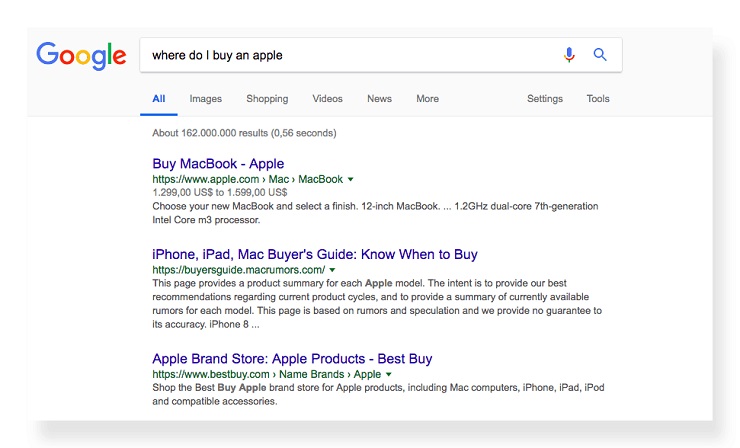You’ve decided to bite the bullet and embrace search engine optimization (SEO), the strategy digital marketers around the world use to help businesses get found online. But in a field fraught with disagreement and ever-shifting rules, where do you even start? And is it really worth all the effort?
To be frank, the answer is that you really don’t have any choice but to embrace SEO. There is simply too much content on the web to hope people will stumble upon your business. So aside from creating stellar content that tempts your visitors into converting, you need to optimize your site so your target audience can actually find you online.
The good news is, you don’t have to hire an agency to get started with SEO, and even the smallest and scrappiest startup can launch a campaign that can help you rank high in search results for important, competitive keywords. All it takes is a decent campaign strategy, an SEO audit, and a little spying (not in a creepy way) on your competition.
In this article, we will outline how to get found online by getting started with an effective SEO campaign and audit and the rewards your business could reap if executed correctly. I’ll break it down into six main steps.
1. Put a Plan in Place
SEO campaigns are not for the faint of heart, but you can avoid some of the common headaches if you define your goals and strategy before you dive in. The first thing you need to decide is how you will measure your progress toward your pre-defined goals.
While your first thought might be to score the coveted first position in Google search results, it’s important to dig a little deeper than that. You need to answer three crucial questions before you get started:
“Who is my audience?”
You need to ask yourself who you are trying to get in front of by scoring that top spot in Google results. This is the first step in defining your marketing personas. Obviously, someone who sells vintage posters online isn’t trying to reach the same audience as someone who runs a local construction company in New Jersey.
Understanding who you are trying to reach will also help you segment them based on where they are in the buying process. You can get information about who your visitors are in Google Analytics.
Within G.A., you can see the breakdown of your visitors by age, location, gender, etc. Knowing this information will help you segment your audience and refine your strategy in reaching out to them.
In the screenshot above, you can see the breakdown of a website’s audience by both age and gender. The bar graph shows that this site is most popular with people between the ages of 25-34, and the pie chart shows that this particular site’s audience is around 66% male. So, based on these demographics, young adult men are a big chunk of your audience and who you are most likely to target.
We cannot stress enough how important this step is for your marketing efforts. Knowing your audience will help you deliver the exact right message at the exact right time.
“Why am I trying to get these people to my site?”
Don’t corner yourself into only looking at vanity metrics like website traffic or even engagement rates. Part of defining your success is focusing on a specific (measurable) business goal. Are you trying to capture leads? Drive sales? Build your email list? You need to decide on a goal that is important to you and your business.
When coming up with a goal, try to make it SMART:
- Specific: Instead of something generic like “boost sales,” choose “increase sales for men’s fashion category by 50%.”
- Measurable: Choose something that can be backed up with real data. “Increase website visitors” can be, while “improve brand awareness” cannot.
- Attainable: Be realistic. Stretch goals are fine, but you need to set yourself up for success.
- Relevant: Your campaign goal needs be relevant to your business’s objectives.
- Timely: Set deadlines for yourself and your teams. SEO can take a while to show its benefits, but that doesn’t mean you can’t set deadlines for content, design, promotion, etc.
“How will I know if I’m reaching my goal?”
It’s not always easy to measure your success in the SEO world. Some common metrics are conversion rates or newsletter signups. Be warned: if you can’t come up with a metric to measure at this stage, you probably need to choose a different goal.
Click Here To Get Free Instant Access To 28 Proven Marketing Strategies For New Startups!
2. Begin Your Keyword Research
Even novice digital marketers know the importance of keywords, but the way we need to go about researching and optimizing our keywords has changed dramatically over the years.
Since Google’s introduction of the Hummingbird and RankBrain algorithms, we know that it’s more important to focus on the context of words used in a search query and the purpose driving a query. For example, context and intent is how Google understands the difference between Apple the fruit and Apple the computer.
Look at the example Search Engine Results Pages (SERPs) below for similar queries:
Google understood that query to mean the edible apple. Now look at SERP when the query is slightly changed:
Clearly, Google can understand the different intents even though the queries were almost identical. Keep that in mind when you are writing your content.
Search intent can be broken down like this:
- Informational Keywords – People who want to learn more about a topic will use phrases like “how do I,” “do I need,” or “what is.” These are high-volume keywords, usually, but these users aren’t your most likely to convert. They are probably just gathering information before they decide if they want to actually make a purchase.
- Evaluation Keywords – People using these keywords usually already know a bit about the topic and are now weighing their options. These queries typically include words like “review,” “top 10,” “cheap,” and “deals.”
- Action Completion Keywords – Searchers using these are the motivated few that are ready to convert as soon as they find you. They expect to find their goal as soon as they land on your page, and likely already have their wallets out next to their computers. These keywords are lower volume but have a much higher conversion rate.
Search intent will help you understand where your visitor is in the conversion funnel:
In the image above, you can see a typical marketing funnel. For those users in the top of the funnel, their search intent is going to be mostly informational.
Users that are in the research phase know something about what they are searching for and are just trying to learn more or evaluate options.
Users in the bottom of the funnel are a smaller audience but are the most likely to convert. These are your super-motivated visitors that have cash in hand. They will find you with your branded keywords, like the name of your business or the exact product they are looking to buy.
Depending on what phase of the funnel you’re trying to draw users into, you’ll want to rank for different types of keywords. If you’re trying to initially build an audience of people geared toward awareness of your brand, the informational keywords will be key. On the other hand, if you have some substantial traffic already but need to crank up conversions, you’ll want to improve ranking for action completion keywords.
Keyword research is incredibly useful when trying to reach your different users at the appropriate time. It’s not enough to just throw some content up on your site and hope your users find you; you need to know what they are looking for and what the resulting outcome might be when they find you. You also need to understand if targeting a certain keyword is going to be worth the effort for you in terms of search volume.
For instance, if you are targeting a keyword that has a ridiculously high monthly search volume, it might be too competitive for a new company to pursue. Alternatively, a keyword with a small search volume might be attainable for a smaller company to rank for, but what’s the point of ranking for something that no one is typing into the search box?
For SEO newbies, there are lots of free and paid tools out there to help you decide on the right keywords for your site. Keyword research is simply too important to SEO to be ignored due to a small marketing budget. Here’s a list of free tools to check out.
3. Audit Your Site to Get Found Online!
This is kind of a no-brainer for most digital marketers, but it’s important to understand why you need a technical SEO audit in terms of online visibility. Think of it as a digital report card. But don’t get intimidated! You can easily tackle these issues in bite-sized pieces to optimize your site.
Technical Audit
Technical SEO is the process of building a website so that search engines can understand your site when they “crawl” the web. If your site isn’t built correctly, it might not even get indexed, which translates to zero search results.
This information will be a bit technical for those of you who have not be exposed to any of the SEO-world jargon before, so bear with me. I have included external resources for anything that deserves a more in-depth explanation.
Though there are dozens of important criteria to pay attention to, these are the main boxes to tick:
- XML Sitemap: Search engines use this sitemap to find and prioritize your URLs.
- Robots.txt: The robots.txt file allows you to tell search engines what pages to read and crawl. You can stop them from crawling unimportant or duplicate pages so they can spend their crawl budget on more valuable pages.
- Page Speed: Load time is super, super important for user experience, so it’s super important to your SEO. Not only is page speed one of Google’s ranking factors, a recent study found almost half of website visitors will leave the page if it doesn’t load in two seconds or less. An audit will help you identify some slowness culprits. Lots of paid tools will help you track down what is slowing your site down, or you can check your URL with Google’s PageSpeed Insights.
- URL Structure: Don’t use underscores in your URLs – search engines don’t see them as spaces. Use hyphens instead. Also, if you use parameters in your URLs, use Google’s URL Parameter Tool in Google Search Console to address duplicate content issues.
- Meta Tags: A well-crafted and enticing meta description can motivate people to click onto your site and explore. Even though meta tags aren’t necessarily a ranking factor, they can really help to sell your site and your content before someone decides which link to click.
Crawl Your Site
After completing a technical SEO audit, you should crawl your site if you want to get found online. SEO crawlers follow links around your website, collecting information about the pages they encounter. They output the data they collect for digital marketers to improve their technical SEO. These crawlers essentially look at a website through the eyes of a Googlebot.
Crawlers are especially important for bigger sites with lots of URLs. This way, you can analyze the URLs on your website and uncover issues that could impact how Google sees and indexes your site.
Common issues include:
- On-page SEO: Issues with HTML can sometimes cause Google to see duplicate or empty pages.
- HTTP Status: Search engines aren’t able to crawl pages that don’t load or sites on unresponsive servers. Uncover any redirect issues that impact your SEO in this step.
- Non-indexable pages: Crawling your site will uncover URLs that are disallowed via your robots.txt and meta robots tags.
- Canonical Issues: The canonical URL is the “main” URL. These are the ones you want your human users to access and where you want your link juice and authority to collect. If you mess up your canonical tags you could run into some trouble, though.
Click Here To Get Free Instant Access To 28 Proven Marketing Strategies For New Startups!
4. Create Awesome Content
Easier said than done, right? But here’s your chance to capitalize on all the work you’ve done on keyword research and creating your strategy.
Whether you are crafting content for a landing page, your homepage, or your blog, always keep your audience in mind.
You need to consider what your user needs and wants before you start creating content. Define two things before you start writing: who is your target audience for this piece, and what stage of the conversion funnel are they in? We discussed these concepts in an earlier section. This will help you decide which keyword to optimize around.
Focus on these SEO factors when crafting your content:
- Keyword consistency: The days of keyword stuffing are over. Now, you need to make sure you’re using your keywords consistently, throughout the page, and at every level (the body copy as well as headers and subheaders). There is no set number of times that is required, as search engines are now more focused on sites using them in a natural way rather than cramming as many as you can into a sentence. An audit of keywords and keyword consistency, like the one pictured in the site audit below, will analyze the page to make sure the keywords are being used naturally. This is done by making sure your most important keyword is used in your title tag, meta description, and header tags most importantly, your <h1> tags, which are the tags that stand out most).
- Value: “Content is king” has been the unofficial motto of digital marketers since Bill Gates coined the phrase in 1996. But how do you measure “content”? Simply put, make sure the content you produce is valuable to your user. It should solve a problem, explain information or answer a question the user has asked.
- Links: We aren’t talking about backlinks (yet). Internal links are a great way to distribute link juice around your site. There’s also been some evidence that linking out to high-authority sites can help your SEO. Link to authority sites in your industry where it makes sense in your content, just like I just did in the last sentence here.
- Images: Images are crucial for user experience. No one wants to read a gigantic block of text without any visuals. You can optimize your images for SEO, though, by using the HTML alt parameter in the image tag. It sounds technical, but it’s really important to do. This is how Google “sees” an image, through its alt description. Learn how to implement your image alt tags here.
5. Build Your Link Profile
Next, you’ve got to get other, high-profile sites talking about you and your content. Actually, you need them linking to you, otherwise known as backlinks, a vital part of SEO. And unfortunately, great content isn’t always enough to earn backlinks. Most content won’t get found online or receive any shares or likes without a bit of promotion behind it.
Once again, we need to revisit our marketing personas and SEO strategy. If your content is useful to your audience, you are much more likely to earn backlinks.
Using a tool like Pitchbox will allow you to curate a list of bloggers/influencers in your niche and obtain their contact information. The strategy is to write a valuable piece for high-profile blogs and include a link to your website in the content. Pitchbox will help you automate your outreach for link building but in a very natural, human way.
Your Pitch
People can generally spot a form email from a mile away, so using a basic outline or template should just be used for guidance—always personalize where you can.
When building your link profile, focus on the value of your content. If your content is unique and well-executed, elaborate on that during your outreach.
Links should not be in the form of URLs in your outreach emails. It makes your outreach look automated. Instead, use text hyperlinks to your content.
The subject line needs to stand out, because these bloggers and influencers are getting tons of emails daily. Make them compelling enough to grab their attention, but vague enough that the email just needs to be opened.
Finally, don’t forget to sign off with your contact information. It proves you’re legitimate.
Click Here To Get Free Instant Access To 28 Proven Marketing Strategies For New Startups!
6. SEO for Startups: Test, Optimize, and Test Again
Pat yourself on the back for making it this far. You have built a solid foundation for your SEO strategy. But you aren’t finished yet.
Digital marketers know the golden ABC rule—Always Be Checking. Search Engine Optimization isn’t something that you can do once and never pay attention to again. The rules and algorithms that we base our strategies on are constantly changing, so what was best practice now might actually hurt your site a few months down the line.
Additionally, you need to be aware of the changes you’ve made on your site so you can measure your progress. Google Analytics can show you if your changes are having a positive or negative impact on your traffic or conversions.
SEO is a marathon, not a sprint. The good news is, you’ve now gone through the basic training you need to start running. From here, continue to test and optimize your site in order to get your business in front of your target audience.
Do you have any questions about your SEO campaign or getting found online? Let us know in the comments!























